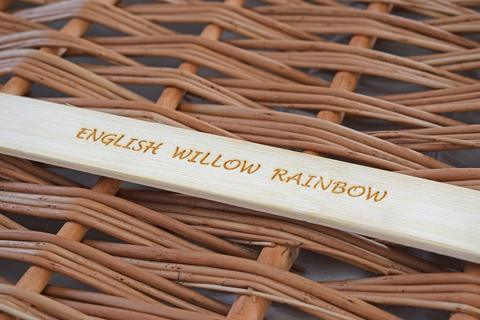
Our physical impact on the planet after death has been transformed by contemporary practices of chemical embalming, elaborate burial enclosures (hardwood/metal caskets, vaults, liners, and mausoleums), and resource-intensive cemetery upkeep. A typical cemetery buries 4,500 litres of formaldehyde-based embalming fluid, 97 tonnes of steel, 2,000 tonnes of concrete and enough wood to build 4 homes in every acre of space. How can we reconsider these practices that harm the earth and the health of its still-living humans?

Green funerals may be a solution.
A green funeral replaces practices that cause environmental harm with those that provide environmental benefit. The beauty of this approach is that it’s nothing new--but rather the way that humans managed death for millennia. (Though some newer green funerals have emerged with modern flourishes!) Mainstream culture is taking note: green burial and eco-friendly funerals are becoming the “only way to go.” Below we cover why and how you might choose a green funeral--but first, here are the 3 main ways conventional burials hurt the planet:

1. Misplaced materials
-
Natural resources like wood, metal, and concrete are buried in massive quantities--never to be reused.
-
Many conventional burial items won’t decompose for decades (or perhaps more, in the case of a polished coffin placed in a concrete vault).
2. Loss of Land
-
Cemeteries are running out of space (a quarter of England’s cemeteries are expected to be full by 2023), and society is running out of appropriate cemetery land. To clear space for more graves, cemetery workers remove benches and dig up trees ( or reusing graves to bury multiple bodies - known as “cramming”). Land converted to cemeteries will likely never return to woodland or pasture--meaning permanent ecological impacts.
3. Posthumous Poisons
-
Many coffin materials contain formaldehyde - a carcinogenic substance and other toxic chemicals that will pollute when buried or burned.
-
Embalming fluid can cause cancer in undertakers and may enter streams or taint the groundwater.
-
Conventional lawn cemeteries require fossil-fueled maintenance (fertilisers, pesticides, lawnmowers, irrigation).
So is burial or cremation the greener choice?
Many considerations come into play when determining the environmental impacts of burial and cremation. The details matter a great deal: for example, there are a range of burial types (embalmed vs. unembalmed body, type of casket, whether a vault is used, type of cemetery), all with their own unique profile of ecological impact.
Indeed, cremation can be less resource-intensive (no vault, for example) and consume less land. But energy consumption and crematoria emissions are substantial. Since 2015, more than 75% of those who died in the UK were cremated. An average cremation uses 92 cubic metres of natural gas (emitting about 400 kg of CO2--equivalent to an 500 miles car trip). The majority of coffins used in UK cremations are made from chipboard or MDF that release harmful nitric oxide and nitrogen dioxide (collectively known as NOx) when burned. Cremations also release several grams of toxic mercury and other poisons like dioxins and dibenzofurans (PCDFs).
It has been estimated that cardboard coffins consume half the energy required for combustion. They also release less than one-third the amount of toxic gases, such as nitrogen oxide, sulfur dioxide and CO2, because no chemical adhesives are used.
What is a green burial?
Green burial returns the body as naturally as possible to the earth. It has really been only in the past century or so that we (in Europe and North America) have come to use chemical embalming and a multi-layered casket and vault system for “conventional” burials—and we are still exceptions to the global norm. Green burial is a return to the simpler practices by which we have buried the dead for most of human history—and still do in much of the world.
Green burial avoids using formaldehyde-based embalming to preserve the deceased. The body may be buried in a biodegradable container such as a cloth shroud, pine coffin, or wicker casket. Natural clothing is worn and plastics are avoided. Green burial often happens at a depth of about one metre, where the biological processes supporting decomposition are more active.
The burial site avoids the use of concrete vaults or grave liners. Native stones or plantings take the place of conventional polished headstones.
The first woodland burial ground in the UK (The Woodland Burial) was created at Carlisle Cemetery in 1993. Since then, over 450 dedicated natural burial grounds have been created in the UK. The Association of Natural Burial Grounds (ANBG) was established by The Natural Death Centre charity in 1994, and maintains a list of active natural cemeteries.
4 reasons to choose green funeral vs a traditional funeral (and only 1 is environmental)
As awareness grows of the high environmental costs of conventional funeral practices, many are trying to lessen their final footprint. There are wide-reaching benefits that a green funeral or natural burial can offer. Here are a few:
1. Financial:
Green funerals can be far less expensive than a conventional funerals, particularly if you are able to reduce funeral home involvement and choose an inexpensive coffin or shroud.
2. Emotional:
The natural setting of green burials is conducive to both traditional and spontaneous celebrations of life and acknowledgement of loss. Green burials often take place in locations of great beauty or conservation value, providing both solace and sustainability.
3. Cultural:
Green funerals allows participants to see death as a natural part of the life cycle and to learn how their culture marks the final passage. Eco-coffins are often made with local resources by local craftspeople. Some people even decorate the coffins as part of the mourning process.
4. Environmental:
For individuals who want to reduce their carbon footprint after death, a green funeral can be an excellent way to reduce this impact. Green funeral avoids the use of toxic embalming chemicals that can harm morticians and the environment. It conserves precious resources such as hardwoods and metals (used in conventional caskets) as well as concrete (for burial vaults).

